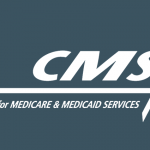New research from the Center for Connected Medicine suggests traditional providers risk losing ground to tech-savvy competitors
Patients increasingly expect their health care providers to offer apps and other digital health tools to assist with a multitude of tasks, including making appointments, checking their personal health data, messaging care teams and accessing virtual care.
While many hospitals and health systems have rolled out digital offerings, a new research report from the Center for Connected Medicine (CCM) finds that these tools may not be keeping pace with patient expectations.
Based on a survey of more than 100 health system professionals, the CCM report finds that fewer than 1-in-3 respondents believe their organization is providing a best-in-class digital experience for patients. The result suggests traditional health care providers could lose ground to more tech-savvy competitors.
“Patients now assume they’ll have the same digital experience in health care that they get everywhere else in their lives, and they’re dissatisfied when we don’t deliver,” said Katie Scott, Vice President of Digital Strategy and Innovation, UPMC Enterprises. “Increasingly, if hospitals and health systems can’t provide a feature-rich and seamless digital experience for their patients, those individuals are going to look elsewhere for care.”
Want to publish your own articles on DistilINFO Publications?
Send us an email, we will get in touch with you.
UPMC Enterprises is the innovation, venture capital and commercialization arm of UPMC. The CCM is jointly operated by GE Healthcare, Nokia and UPMC. Defined as apps, wearables, web tools, connected devices and telehealth platforms, patient-facing digital health tools are a critical or high priority at a majority of health systems, the research found.
What digital tools are health systems using, planning to implement?
Most digital tools currently in use by respondents’ health systems are those typically found in patient portals, such as health record access, bill paying, appointment scheduling, and doctor search. Over the next year, survey respondents said they were planning to add check-in and arrival management tools and the ability to monitor chronic diseases. See the chart below to learn more and see which tools are expected to provide the greatest return on investment.
Earlier research by the CCM found that the patient portal was the most-cited technology deployed in health systems for patient engagement. According to the CCM’s Top of Mind 2020 report, 82% of respondents identified the patient portal as one of their top three currently leveraged engagement technologies. Meanwhile, mobile applications in general and the Apple Health app specifically were ranked much lower by respondents.
About one-third of consumers are interested in using apps for identifying symptoms and for health coaching, according to recent Deloitte research. However, existing digital tools offer mostly basic functions, and only 40% of respondents to the CCM survey reported digital tools being successfully integrated into the overall patient experience. Commonly cited obstacles were the cost to build, buy and maintain digital tools, along with integration difficulties and operational challenges.
The CCM research report, “The Future of the Digital Patient Experience,” is based on a September 2019 survey conducted in partnership with HIMSS of 136 business, technology and clinical professionals at U.S. hospitals and health systems.
Source: Connected Medicine







